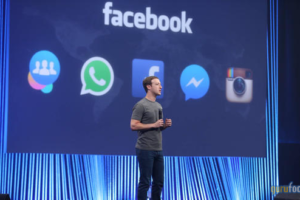Hello and welcome back to MarketWatch’s Extra Credit column, a weekly look at the news through the lens of debt.
In this week’s column we’re taking a closer look at corporate initiatives designed to help potential students avoid debt — programs offered by employers that cover tuition for their workers.
Though these programs often sound like a win for employees and a decent recruitment tool for companies, experts advise examining the small print of these plans. That’s what we’re going to do here.
Over the past several months, major employers — perhaps most famously, Amazon AMZN — have announced they’d fund college tuition for their workers, amid labor shortages across several industries.
But first let’s look at the experience of one Florida student.
Rebecca Hall, 22, is just two semesters away from graduating with a degree in mechanical engineering from the University of Central Florida. She has no student loans.
That’s a feat accomplished with money she earned over the past two years running children’s programming, selling merchandise and doing other jobs at Disney World and its associated resorts, and by taking advantage of the Walt Disney Co.’s DIS, +1.50% offer to pay employees’ college tuition.
Hall says using Disney’s Aspire program, which the company launched in 2018, “was one of the best options I could have gone for as far as funding school.”

Rebecca Hall is set to graduate with a debt-free degree thanks in part to Disney’s Aspire program.
Hall is just one of thousands of Disney employees who have taken advantage of the tuition benefit. But her experience illustrates the challenges workers can face using these programs that have some experts questioning their potential to transform students’ lives, not to mention the economy and the college financing system at large.
For Hall, getting to this point has involved overcoming multiple logistical hiccups. One example: After her first semester in the program, where her full-time course load was fully covered by Disney, she received an email from the Aspire program indicating it would curtail the number of credits the company would fund each semester, to nine, about a month before Hall’s next term began.
Hall rushed to secure a scholarship to pay for the extra classes she wanted to take. But she learned the scholarship wouldn’t go towards paying for those courses. That’s because the Disney benefit covered any remaining tuition for the nine credits after scholarships had been applied to the bill.
But perhaps the most challenging part of Hall’s experience has been balancing school and her job. While attending college full-time Hall spent at least 40 hours per week working for Disney and she was regularly called in to work six day weeks during peak season, which meant sometimes she had to miss her classes.
“‘What is the point of doing a degree, putting all this work into a class and then you can’t take your exam and you fail it because your employer needs you to work?’”
“Employers need to be better about working with employees as far as scheduling goes,” Hall said. “What is the point of doing a degree, putting all this work into a class and then you can’t take your exam and you fail it because your employer needs you to work?”
Fortunately Hall never had to miss a test, but she did have to call out from work to take them. Too many of those calls could have put her job, and of course the tuition funding, at risk.
Disney declined to comment on this story. Between August 2018 when the program launched and early 2020, more than 12,000 employees had enrolled in classes and more than 500 completed degrees through the program. When the company furloughed employees during the COVID-19 pandemic, it continued funding their college education.
Even with the obstacles, it was still a success
Despite the obstacles Hall faced, most would consider her debt-free degree a success story both for her and the program. And it may be what many imagine when major employers make headlines with their offers to pay tuition: A student attending a public four-year college in-person to study a subject of their choice.
But the reality is that in addition to the challenges employees in these programs may face balancing work and school, the constraints on where and what students can study vary, which is why experts say potential students and employees should consider these programs closely before jumping at a job to take advantage of them.
There are many strategic reasons why employers might want to offer these programs. For one, they can help recruit and retain workers. In addition, they also allow employers to have their workers co-invest in their own training, said Peter Cappelli, a professor at the University of Pennsylvania’s Wharton School, who has studied employer tuition benefit programs.
While these benefits are often framed as if the employer is paying for your education, they’re just paying the out-of-pocket costs — the employee is paying in a sense by going to the classes and doing the assignments, Cappelli said.
“‘The slightly more cynical reason why employers might do this is because it sounds like it’s a really great thing — and it could be — but very few people get to use it.’”
“The slightly more cynical reason why employers might do this is because it sounds like it’s a really great thing — and it could be — but very few people get to use it,” Cappelli said.
Indeed, about 80% of employers surveyed by Willis Towers Watson offered a tuition benefit for employees in 2021. But the advisory company found that at 58% of the companies it surveyed, “few” or “very few” employees used it.
When thinking about many of the programs announced recently, the data come with a caveat, said Lydia Jilek, senior director, voluntary benefit solutions at Willis Towers Watson. The survey asked about tuition reimbursement benefits, which many companies have offered for decades, and reimburse employees who pay for tuition up front.
Reimbursement vs. debt-free
Those programs have pros and cons. Companies pay the tuition directly to the school, so the employee never has to shoulder the cost — and that is probably the biggest advantage to the benefits offered by Walmart WMT, +0.24%, Disney, Amazon and others.
Paul Freedman is president of the Learning Marketplace at Guild, a company that works with employers, like Walmart and Disney, as well as with universities to offer these benefits. He suspects that by avoiding the need for employees to fund the tuition, programs like those on Guild’s platform have higher take up and are better suited to frontline workers, who may not have the thousands of dollars available to pay and wait for reimbursement.
“We really push for more debt-free programs,” Freedman said. The challenges of reimbursement “made the programs underutilized,” he said.
But the new model for tuition education benefits often offer less flexibility than what’s been offered historically, Cappelli said. “They’re really skimpy compared to what used to be offered,” he added.
“‘We really push for more debt-free programs.’”
The initiatives Cappelli is referring to were often part of executive development programs, which means they typically came with an assured promotion after the employee finished the degree.
Now, because these tuition programs often aren’t part of executive development there isn’t as much flexibility time-wise for workers to complete their schooling, Cappelli said.
For her part, Rebecca Hall’s commitment to getting her college degree affordably goes back to before she landed at Disney. She spent a semester at Purdue University participating in ROTC, which would have covered a large part of her tuition, before realizing the Air Force wasn’t for her.
Hall also moved to Germany for a period with a plan to take advantage of the country’s free college tuition. But it’s not hard to see how some of the obstacles she faced could delay significantly, or derail others completely from persisting in school.
“Imagine you’re working a 40-hour week and you’re trying to get a degree on top of that?” Cappelli said. “Imagine you’ve got kids, responsibilities at home, it’s really, really hard to go to school part-time and if you could finish in 10 years that’s pretty fast.”
Constraints on where students attend and what they study
Today’s programs are typically less flexible than tuition benefits of yore in other ways, too. In the past, employees could often choose the school they attended, though for practical purposes it was likely somewhere local, Cappelli said. Now, employers usually limit the universe of where and what students can study.
“What we’ve found is both employers and students desire curation,” Freedman, of Guild, said. His platform includes over 2,220 programs and on average, employers choose to offer 317 to their workers.
Still, in some cases that could mean a student hustles to work and complete a degree in which they have little interest, or that won’t provide them much benefit beyond the specific company they’re working for.
“If you have an employer that is offering an associate’s degree in logistics and that may not be your long-term career plan, does it make sense to pursue an associate’s or bachelor’s degree in something that may not be part of what your long-term career plan is going to be?” Jilek said.
“‘Even if something is free or debt-free to the student, it still needs to be worth their time.’”
Of greater worry to some are the limits placed on where students can study. Stephanie Hall, a senior fellow at The Century Foundation, said she’s concerned about the quality of the programs employers are offering to students.
“Some of them appear to be institutions with low completion rates, high marketing spend, low investment in actual instruction,” she said. “Even if something is free or debt-free to the student, it still needs to be worth their time.”
Amazon hasn’t announced its partner schools yet, but the company plans to work with “respected, vetted education partners who understand adult learners and the unique challenges they face,” according to a spokesperson. The company will have more information to share in January, the spokesperson said.
Employers are more likely to partner with certain types of universities
Kevin Kinser, the head of the Education Policies Studies department at Pennsylvania State University, said it makes sense that companies would choose to partner with open access, in some cases for-profit, colleges that may not graduate a large share of the students they enroll.
“Colleges are looking for institutions that have liberal admission policies, that have attention to adult learners, that have online programs and that have some ability to work at scale,” Kinser said. “You’re trying to find places that are not going to take 10 or 15 people, you’re looking at places that can take 2,000 or 3,000.”
“‘Colleges are looking for institutions that have liberal admissions policies, that have attention to adult learners, that have online programs and that have some ability to work at scale.’”
In addition, employers are looking for colleges that can treat the arrangement like a business-to-business contract, instead of pushing the companies to conform to the standards and policies the schools have set up, Kinser said. That may be why employers lean toward for-profit colleges or online public university systems that were created after a public college purchased a for-profit school, he said.
Employers may also prefer non-profit colleges that work with online program management companies for this reason too, Kinser said. Some colleges hire these firms to recruit students for their online programs and help them with the back end of offering the courses. Over the past few years, these companies have been the subject of some controversy over concerns that this outsourcing may be driving up costs for students.
Kinser said the jury is still out as to whether sending employees to programs with spotty track records graduating students will pose a problem. “Even in an institution that might, in general, not graduate a lot of students, they are still graduating students and these might be the type of students that would be beneficial for the institution to enroll,” he said.
At Guild, which works with a range of partners, including community colleges, four-year nonprofit and public colleges and a small group of for-profit businesses offering work-aligned programs, Freedman said the company does “an intense amount of work” vetting a school before they’re willing to partner with them.
Guild looks for things like how successful a program is at increasing students’ earnings, advancing their career, how well they work with adult learners, and more, Freedman said. Still, it’s ultimately up to the employer to decide which schools they’ll pay for.
Pathways for working adults
Evangeline Cummings, assistant provost and director of UF Online at the University of Florida, said she was disappointed to learn a few months ago that Walmart would be dropping the University of Florida from its employee tuition benefit. Cummings said she hasn’t been able to speak with Walmart about the decision directly, but she was told by Guild that it was because the University of Florida was too selective.
Cummings said she knows that traditional four-year public and nonprofit colleges have more work to do to make it easier for working adults to navigate their programs.
But she also worries that employers may not be incentivized to help their employees get on a path to attending these schools by, for example, paying for them to start at a community college and transfer. She said the university is also working to make these pathways clearer and easier to find with added guidance for adult learners.
“‘I fear that there might be a well-intentioned motivation on behalf of employers to get as many workers as possible into certain open access programs.’”
“I fear that there might be a well-intentioned motivation on behalf of employers to get as many workers as possible into certain open access programs,” Cummings said. “It’s not always going to be the easy path to come to the University of Florida, but it might for many be the best path.”
Walmart chooses its educational partners for its tuition benefit program, called Live Better U, based on their track record educating adult and working students and their focus on degree completion, Lorraine Stomski, senior vice president, learning and leadership at Walmart said in an emailed statement.
“Based on Guild’s quality assurance assessment across programs and schools, Walmart followed Guild’s recommendation and added six new partners this year, including the University of Arizona and Louisiana State University, and made the difficult decision to remove the University of Florida from its catalog,” Stomski wrote. “These were data-driven decisions rooted in our commitment to provide our associates with access to education opportunities.”
Still, Cummings worries that by removing the option to attend University of Florida it sends the message that the school is too selective for working adults, even though the University of Florida has “outstanding” students from Walmart — including one who graduated this summer and another who is supposed to graduate this fall — and other employers successfully making progress towards their degrees.
It could also reinforce the idea among residential universities that they shouldn’t reach out to this population, she said.
Ultimately, Hall is grateful she’ll be able to complete a degree she’s interested in at a school she’s happy with debt-free thanks to the work she put in at Disney and the benefit they provided her. But she wishes it didn’t have to be this way.
“I think our system is incredibly broken right now,” Hall said of the way people pay for college in the U.S. “And I’m just trying to navigate this broken system.”



